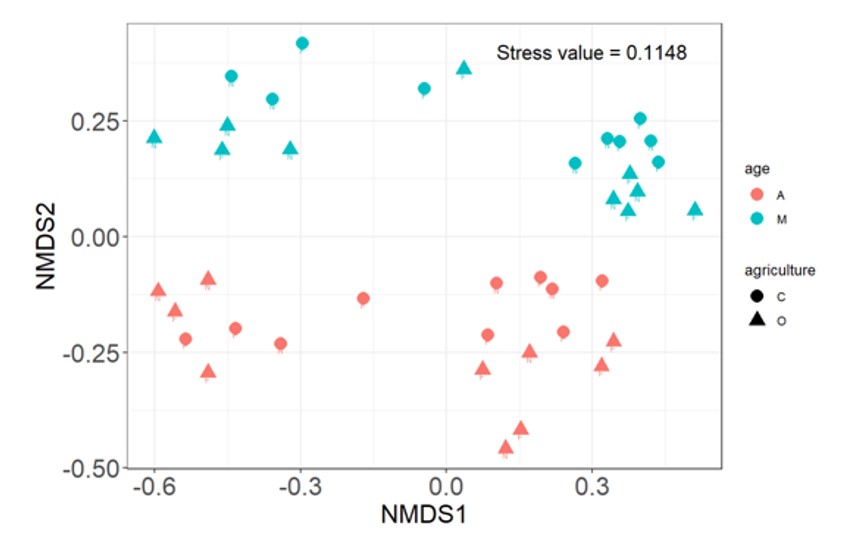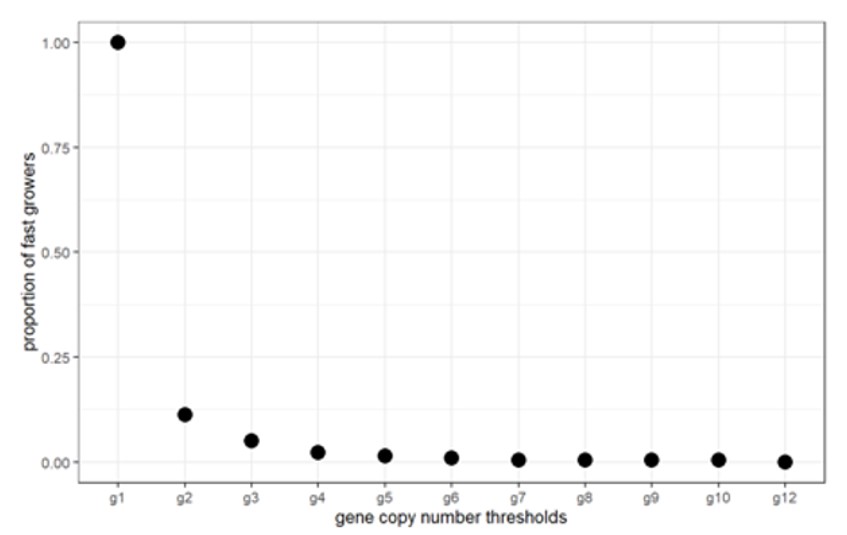Bioinformatic analysis of the wheat rhizosphere microbiome
The health status of the soil is greatly dependent on the microorganism biodiversity due to the several ecosystem functions and soil processes they participate in. The interaction between soil microorganisms and roots is characterized as rhizosphere. Several factors affect the rhizosphere, but even with microbial community change the functions and processes may be maintained due to functional redundancy. Functional traits are morpho-physiophenological characteristics that indirectly impact fitness and a trait-based approach may facilitate predictions regarding the implications of the ecosystem and microbial processes.
Objective
Do climate change, farming management techniques, and plant maturity affect the wheat rhizosphere microbiome? Specifically, regarding taxa abundance and growth rates (slow and fast-growing organisms) through a trait-based approach.
Workflow

- Data was downloaded from the NCBI website (raw data available at: https://www.ncbi.nlm.nih.gov/bioproject/?term=PRJNA605022) and imported into Rstudio
- DADA2 workflow was applied - For each sample, the forward and reverse reads were separated - Primers were removed (forward read primer 515f Original and reverse primer was the 806r) - Data were filtered for quality and reads were trimmed at positions 210 and 160 base pairs - Error model was generated - Strings were dereplicated - Chimeras were removed
- The taxonomy was assigned by the SILVA r138 database using the R package “DECIPHER”
- Alpha diversity was measured by Shannon and Simpson indices
- Relative abundance for the different phyla and classes was calculated
- Non-metric multidimensional scaling (NMDS) analysis
- Metagenomic profiles were predicted using PICRUSt2 - Amplicon sequence variant abundance - Gene copy number
Results
Relative abundance

Non-metric multidimensional scaling analysis

There is a distinction between growth phases
Growth rate threshold

Conclusions
Regarding taxa abundance, the growth phase of the wheat leads to a different structural composition of the rhizosphere, with increasing diversity in the mature wheat treatment. The other treatments, climate change, and farming management techniques, didn’t have a visible effect on the taxa. Regarding the growth rates, the data had a high predominance of amplicon sequence variants with only one copy, which translates to a microbial community dominated by organisms with low gene copy numbers, therefore, slow-growing organisms. Therefore, we can conclude that the wheat growth phase affects the community composition, but it does not affect the function of the community.
References
Breitkreuz, C., Heintz-Buschart, A., Buscot, F., Wahdan, S. F. M., Tarkka, M., & Reitz, T. (2021). Can We Estimate Functionality of Soil Microbial Communities from Structure-Derived Predictions? A Reality Test in Agricultural Soils. Microbiology Spectrum, 9(1), e00278-21. https://doi.org/10.1128/Spectrum.00278-21
Grządziel, J. (2017). Functional Redundancy of Soil Microbiota – Does More Always Mean Better? Polish Journal of Soil Science, 50(1), 75. https://doi.org/10.17951/pjss.2017.50.1.75
Li, R., Khafipour, E., Krause, D. O., Entz, M. H., de Kievit, T. R., & Fernando, W. G. D. (2012). Pyrosequencing Reveals the Influence of Organic and Conventional Farming Systems on Bacterial Communities. PLoS ONE, 7(12), e51897. https://doi.org/10.1371/journal.pone.0051897
Malik, A. A., Martiny, J. B. H., Brodie, E. L., Martiny, A. C., Treseder, K. K., & Allison, S. D. (2020). Defining trait-based microbial strategies with consequences for soil carbon cycling under climate change. The ISME Journal, 14(1), 1–9. https://doi.org/10.1038/s41396-019-0510-0
Sokol, N. W., Slessarev, E., Marschmann, G. L., Nicolas, A., Blazewicz, S. J., Brodie, E. L., Firestone, M. K., Foley, M. M., Hestrin, R., Hungate, B. A., Koch, B. J., Stone, B. W., Sullivan, M. B., Zablocki, O., LLNL Soil Microbiome Consortium, Trubl, G., McFarlane, K., Stuart, R., Nuccio, E., … Pett-Ridge, J. (2022). Life and death in the soil microbiome: How ecological processes influence biogeochemistry. Nature Reviews Microbiology, 20(7), 415–430. https://doi.org/10.1038/s41579-022-00695-z
Violle, C., Navas, M.-L., Vile, D., Kazakou, E., Fortunel, C., Hummel, I., & Garnier, E. (2007). Let the concept of trait be functional! Oikos, 116(5), 882–892. https://doi.org/10.1111/j.0030-1299.2007.15559.x
